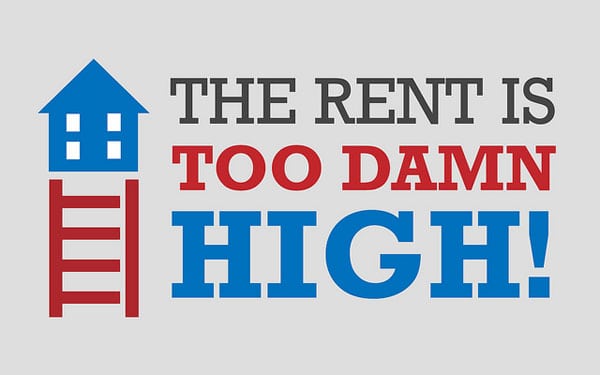
July 27, 2018; New York Times
Last week ended with the nation receiving some encouraging news: The economy had one its best quarters of growth. Month after month since October 2010, things have gotten better. Or have they? Readers of NPQ will find it no surprise that for millions of Americans, even those with full-time jobs, affordable housing is far away. While many nonprofits continue to work to ameliorate the human impact of this growing problem, there are few signs that the politics and policies that have allowed the problem to fester are changing.
Since the crash of the housing market in 2007, the demand for rental housing has been strong, outstripping the construction of new units as rents rise higher and higher. More than a decade after the crash, and despite strong overall economic growth, housing from coast to coast often requires more than the salaries of many households, hourly wage workers, and the unemployed can bear. According to a recent New York Times article, “An estimated 12 million Americans, most of them poor, now spend more than half of their earnings on housing…while prices are cooling at the high end of the market in many big cities, the low- and middle-income housing markets in Nevada, Texas, California, Florida and Colorado are so hot, local officials say, that landlords routinely reject subsidized tenants because they can charge more to other renters.”
A report by the National Low-Income Housing Coalition, Out of Reach 2018, documented how widespread the problem is.
In no state, metropolitan area, or county can a worker earning the federal minimum wage or prevailing state minimum wage afford a two-bedroom rental home at fair market rent by working a standard 40-hour week. In only 22 counties out of more than 3,000 counties nationwide can a full-time minimum wage worker afford a one-bedroom rental home at fair market rent.
An already bad situation is being made worse by the federal government’s current view that much of the problem is local and needs to be solved at that local level. Federal tax incentives, which subsidize the development of below-market-rate housing, became less attractive with the passage of last year’s tax cut bill, even if the final version passed wasn’t as damaging to affordable housing as some proposals would have been. Accountant Michael Novogradac was cited by NPQ at the start of 2018 when it examined how significantly these changes would effect affordable housing: “It’s the greatest shock to the affordable-housing system since the Great Recession.”
Sign up for our free newsletters
Subscribe to NPQ's newsletters to have our top stories delivered directly to your inbox.
By signing up, you agree to our privacy policy and terms of use, and to receive messages from NPQ and our partners.
While federal policy may decrease construction of new units, HUD Secretary Ben Carson is also pushing to reduce funding for rent subsidies and has proposed increasing the rents paid by low-income renters. While telling Congress that he continues “to advocate for fiscal responsibility as well as compassion,” HUD Secretary Ben Carson has proposed raising the maximum rents paid by the poorest households in public housing to $150 a month from $50.
According to the Times, Secretary Carson acknowledges the crisis in most of his speeches. “Alarmingly high numbers of Americans continue to pay more than half of their incomes toward rent…many millions remain mired in poverty, rather than being guided on a path out of it.” He sees the cause as primarily one of red tape and bureaucracy holding the private market back from building new housing and keeping rents affordable.
Raffi Williams, Carson’s spokesperson, says, “Subsidies are a piece of the puzzle, but we must also address the regulatory barriers relative to zoning and land use in higher-cost markets that are preventing the construction of new affordable housing. This is not just a federal problem—it’s everybody’s problem.”
NPQ has covered many local responses to the affordable housing shortfall. Private foundations and corporations have recognized that the harm that shortages cause to the quality of life of their communities. The Chan Zuckerberg Initiative’s “efforts to increase affordable housing parallel the plans of Facebook, the source of CZI’s resources, to expand its corporate headquarters in Menlo Park, California. As announced last year, the expanded campus will include 1,500 residential units, with 225 being rented below market rates.” NPQ also has looked at how local government and organizations not normally in the housing business, like libraries, have become involved in increasing affordable housing options. There is a growing use of land trusts to empower nonprofits to protect the erosion of affordable housing, too.
Energizing state and local governments to do their part and bringing the philanthropic and nonprofit community on board can be part of the solution. But without a robust national effort, those efforts will fall short. Chad Williams, executive director of the Southern Nevada Regional Housing Authority, told the Times that “to be brutally honest, I think that we aren’t really getting any help right now out of Washington, and the situation has gotten really bad over the last two years.…I think Carson’s ideas, that public housing shouldn’t be multigenerational, are noble. But right now, these programs are a stable, Band-Aid fix, and we really need them.”—Martin Levine











